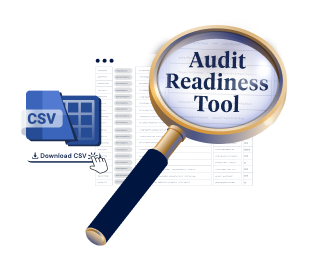Understanding the Intent and Expectations
Standard 4 is about creating and maintaining physical environments that promote safety, comfort, independence, and quality of life. It applies to both residential and in-home aged care and covers everything from cleanliness and accessibility to infection prevention and the safe use of equipment.
This standard reinforces that the environment is not just a setting, a building or a place. The environment is an enabler of and contributor to wellbeing. Standard 4 recognises that where people receive care should be familiar, inclusive, and support their ability to move, connect and live with dignity.
What Training Is Required and Why?
Meeting the outcomes of Standard 4 and achieving the desired impact, or intent outlined above, can’t be left to chance. Staff need training to understand how to keep environments clean, safe, and enabling for every individual. This is why training on topics such as recognising and reducing environmental risks, supporting independence, and ensuring equipment and infection protocols are used properly are key training requirements for all aged care staff. Every environment is different, and so is every older person. This reiterates why education, training and awareness are critical, and must also be tailored to the relevant job roles and settings.
Using Training to Meet Standard 4 Outcomes
The table below outlines how the outcomes of Standard 4 link to relevant training areas:
| Relevant to | Outcome | Training Focus |
|---|---|---|
| Home care services only | 4.1a Environment and equipment at home |
|
| Residential services only | 4.1b Environment and equipment in a service environment |
|
| Both | 4.2 Infection prevention and control |
|
Who Needs Training?
Best practice is always assigning based on a specific need, scope and relevance to each job role.
For Standard 4, it’s also essential to tailor training to the environment, whether care is provided in someone’s home or within a residential service.
The risks, equipment, infection control measures, and staff responsibilities can vary significantly between these settings, and your training program must reflect that.
| Staff Role | Training Focus |
|---|---|
| Personal care workers | Identifying environmental risks, safe equipment use, infection control basics, and maintaining clean, safe spaces. |
| Registered and enrolled nurses | Leading responses to deterioration, clinical oversight of infection control, and coordinating safe environments and equipment use. |
| Cleaning, maintenance, and hospitality staff | Infection prevention and cleaning protocols, maintenance checks, hazard reporting, understanding dignity and respect in personal spaces. |
| Lifestyle and allied health staff | Supporting independence through environmental adaptation, promoting engagement and mobility, and understanding physical and cognitive accessibility. |
| Managers and supervisors | Monitoring environmental safety systems; supervising infection protocols, responding to incidents and continuous improvement. |
Key Training Topics
Key training topics to support the workforce to meet the requirements of Standard 4: The Environment include:
- Environmental safety and risk identification
- Infection prevention and control
- Hand hygiene
- Donning and doffing PPE
- Safe and correct use of equipment, aids, and assistive devices
- Emergency response and evacuation
- Accessibility and inclusive design
- Supporting people with cognitive impairment or disability to navigate and feel comfortable in their environment
- Supporting autonomy, privacy, and dignity through the physical environment
Audit Expectations and Evidence
Standard 4 has a large volume of possible audit evidence because it draws from two key evidence themes:
- Environment – Cleanliness, accessibility, safety, and promoting independence in both residential and home care settings.
- Infection Prevention and Control – Hygiene protocols, outbreak management, PPE, and antimicrobial stewardship.
Auditors will seek evidence that your organisation has systems in place and staff trained to maintain safe, inclusive, and hygienic environments, whether in someone’s home or a residential service.

Ensure your organisation is prepared for your first audit under the strengthened Standards.
Audit Evidence Summary – Standard 4: The Environment
Below are the types and examples of evidence auditors may request relating to Standard 2 during an audit.
| Evidence Type | Theme | Examples of Required Evidence |
|---|---|---|
| Documents and Records | Environment |
|
| Infection Prevention and Control |
|
|
| Governing Body Feedback | Environment |
A governing body (Board) may be asked:
|
| Infection Prevention and Control |
|
|
| Management Feedback | Environment |
Managers may be asked about:
|
| Infection Prevention and Control |
|
|
| Worker Feedback | Environment |
Workers (staff) may be asked about:
|
| Infection Prevention and Control |
|
|
| Third Party Feedback | Environment | Not commonly required for this standard. |
| Infection Prevention and Control | Not commonly required for this standard. | |
| Experience of Individuals | Environment |
Individuals and their families may be asked about:
|
| Infection Prevention and Control |
|
|
| Observations | Environment |
Auditors may directly observe the following:
|
| Infection Prevention and Control |
|
List of Ausmed Modules on Standard 4
Includes Home Care Specific Resources to Meet Standard 4
The following modules from the Ausmed Library help you meet the education and training requirements of Standard 4.
Explore the full library here.
Meeting Standard 4 with Training
Creating safe, clean, and inclusive environments doesn’t happen by default. It takes a trained, informed, and capable workforce. Standard 4 reinforces that the environment contributes to a person’s wellbeing, independence, dignity, and safety.
To meet this standard in practice, organisations must invest in role-specific education, support consistent practice across home and residential settings, and align training with real-world risks and responsibilities.



